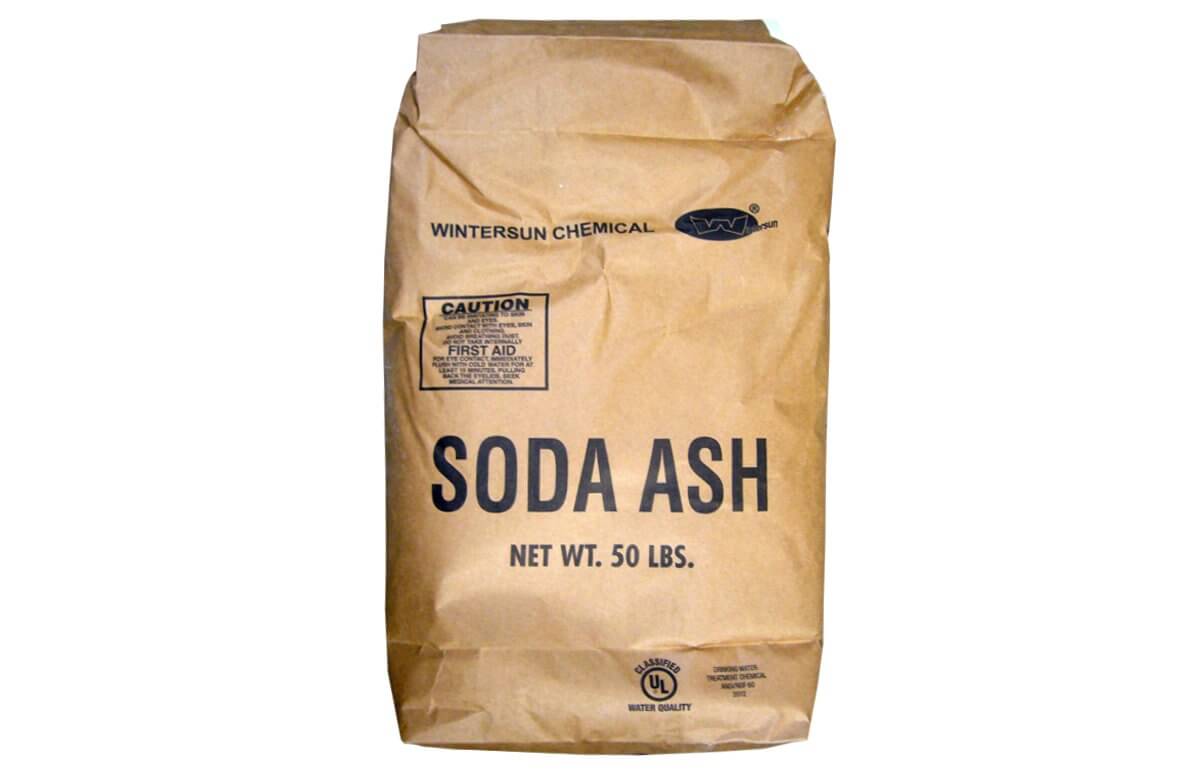What is the description of soda ash, sodium carbonate? Information about the production, uses, history and ingredients of soda ash.

SODA ASH, or dehydrated sodium carbonate (), is ar important commercial chemical. It and other forms of sodium carbonate, such as the decahydrate (
.
) known as washing soda or sal soda, are commonly referred to as “soda.” Mixtures of mild and strong alkalis are called modified sodas.
Uses.
The largest consumers of soda ash are the glass and chemical industries. The substance is used as a flux in the manufacture of glass and in metallurgy, and in the chemical industry it is used to produce other materials such as sodium nitrate and the sodium phosphates and silicates. Soda ash also plays a significant role in the production of sodium bicarbonate and sodium hydroxide. It is used in the manufacture of soap, wood pulp, paper, and water-softening agents, and in the form of soda crystals it serves as a common cleanser. The textile industry and petroleum refineries also make use of soda ash.
Production.
Soda ash was first produced on a commercial scale by a process developed by the French chemist Nicolas Leblanc in the late 18th century. The Leblanc process used sodium sulfate derived from the action of concentrated sulfuric acid on common salt. The sulfate was heated together with limestone to produce soda ash and calcium sulfide. Today, almost all soda ash is produced by the ammonia-soda process first successfully demonstrated by the Belgian chemist Ernest Solvay in 1861.
In the Solvay process, a mixture of carbon dioxide and ammonia gases is introduced into a sodium chloride solution under carefully controlled conditions. Sodium bicarbonate (NaH-) precipitates and is filtered off, and the ammonia in the solution is recovered for reuse. The latter step was essential in the 19th century, when ammonia was very expensive. The sodium bicarbonate is then heated to yield soda ash, water, and carbon dioxide.
Sodium carbonate also occurs in nature in the form of the sesquicarbonate, a hydrated combination of the carbonate and the bicarbonate. Known as trona or natron, it is found together with other minerals left behind by the evaporation of ancient saline lakes and seas. Extensive deposits occur in desert areas, where soda ash is recovered from some deposits by electrolysis.
mavi